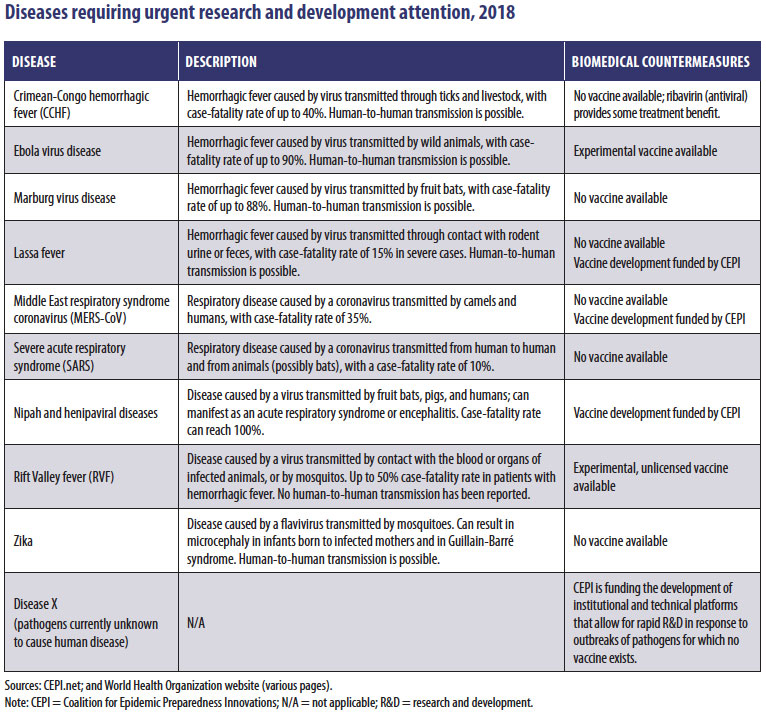Relevance: G.S paper III: economy

Pandemics can cause acute, short-term fiscal shocks as well as longer-term damage to economic growth. Early-phase public health efforts to contain or limit outbreaks (such as tracing contacts, implementing quarantines, and isolating infectious cases) entail significant human resource and staffing costs. As an outbreak grows, new facilities may need to be constructed to manage additional infectious cases; this, along with increasing demand for consumables (medical supplies, personal protective equipment, and drugs) can greatly increase health system expenditures.
Diminished tax revenues may exacerbate fiscal stresses caused by increased expenditures, especially in LMICs, where tax systems are weaker and government fiscal constraints are more severe. This dynamic was visible during the 2014 West Africa Ebola epidemic in Liberia: while response costs surged, economic activity slowed, and quarantines and curfews reduced government capacity to collect revenue (World Bank 2014).
During a mild or moderate pandemic, unaffected HICs can offset fiscal shocks by providing increased official development assistance (ODA) to affected countries, including direct budgetary support. However, during a severe pandemic where HICs confront the same fiscal stresses and may be unable or unwilling to provide assistance, LMICs could face larger budget shortfalls, potentially leading to weakened public health response or cuts in other government spending.
The direct fiscal impacts of pandemics generally are small, however, relative to the indirect damage to economic activity and growth.
Negative economic growth shocks are driven directly by labor force reductions caused by sickness and mortality and indirectly by fear-induced behavioral changes. Fear manifests itself through multiple behavioral changes. As an analysis of the economic impacts of the 2014 West Africa Ebola epidemic noted, “Fear of association with others . . . reduces labor force participation, closes places of employment, disrupts transportation, motivates some governments to close land borders and restrict entry of citizens from affected countries, and motivates private decision makers to disrupt trade, travel, and commerce by canceling scheduled commercial flights and reducing shipping and cargo services” (World Bank 2014). These effects reduce labor force participation over and above the pandemic’s direct morbidity and mortality effects and constrict local and regional trade.
The indirect economic impact of pandemics has been quantified primarily through computable general equilibrium simulations; the empirical literature is less developed. World Bank economic simulations indicate that a severe pandemic could reduce world gross domestic product (GDP) by roughly 5 percent. The reduction in demand caused by aversive behavior (such as the avoidance of travel, restaurants, and public spaces, as well as prophylactic workplace absenteeism) exceeds the economic impact of direct morbidity- and mortality-associated absenteeism.
These results align with country-specific estimates: an analysis of pandemic influenza’s impact on the United Kingdom found that a low-severity pandemic could reduce GDP by up to 1 percent, whereas a high-severity event could reduce GDP by 3–4 percent (Smith and others 2009). The World Bank’s estimates from the 2014 West Africa Ebola epidemic suggest that economic disruption in low-income countries (LICs) could be even greater. For example, the 2015 economic growth estimate for Liberia was 3 percent (against a pre-Ebola estimate of 6.8 percent); for Sierra Leone, it was −2 percent (against a pre-Ebola estimate of nearly 9 percent).
Finally, estimates of fiscal and growth shocks are significant but do not include the intrinsic value of lives lost. Fan, Jamison, and Summers (2016) consider this additional dimension of economic loss by estimating the value of excess deaths across varying levels of modeled pandemic severity, finding that the bulk of the expected annual loss from pandemics is driven by the direct cost of mortality, particularly in the case of low-probability, severe events.
During a severe pandemic, all sectors of the economy—agriculture, manufacturing, services—face disruption, potentially leading to shortages, rapid price increases for staple goods, and economic stresses for households, private firms, and governments. A sustained, severe pandemic on the scale of the 1918 influenza pandemic could cause significant and lasting economic damage.
For more such notes, Articles, News & Views Join our Telegram Channel.
Click the link below to see the details about the UPSC –Civils courses offered by Triumph IAS. https://triumphias.com/pages-all-courses.php

